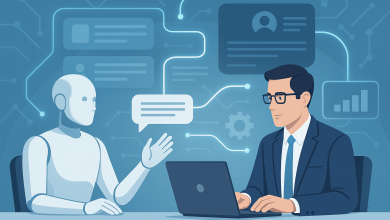
In today’s economy, digital systems are no longer a silent backdrop to business; they are the business. A recent report estimates that downtime costs companies an average of $14,056 per minute, with losses even higher in sectors like retail and financial services. An outage is not just a balance-sheet concern but a matter of eroding customer trust, missed opportunities, and, increasingly, public scrutiny. Risks have doubled as AI workloads expand. Reliability and capacity are no longer optional; they are essential to commerce, governance, and daily life.
However, most organizations are constrained by tight project timelines and cost pressures. They tend to push these issues down the priority list, often addressing them only after something goes wrong. Resiliency was treated as an afterthought, capacity planning triggered only when systems were strained, and AI adoption often outpaced governance structures, leaving vulnerabilities exposed. Bridging the gap between technological ambition and operational reliability has become a defining challenge of our era.
It is within this context that Goutham Bandapati, a Senior Cloud Solutions Architect focusing on cloud and AI platforms for retail and consumer goods, has built his career. His contributions have less to do with short-term fixes and more with rethinking the defaults. By technically implementing resiliency through design, redefining capacity as a matter of governance, and unveiling new frameworks for AI oversight, he has accomplished the shift of the industry from improvisation to planning
Resiliency as a Default Principle
The standard playbook for decades was straightforward: when things fail, recover as quickly as possible. Goutham shifted that mindset. Through the Cloud Resiliency Program, he guided more than 30 Well-Architected Reliability Assessments for Fortune 500 enterprises. These were not box-checking exercises. They produced tailored disaster recovery playbooks, new deployment patterns that lifted workload SLAs from 99% to 99.99%. Moreover, the monitoring systems expanded service health alerting coverage from 20% to near full visibility.
He co-developed the Azure Proactive Resiliency Library (APRL), a collection of automated scripts embedding resiliency into architecture rather than bolted on afterward. As he puts it: “Resiliency isn’t about bouncing back from failure; it’s about designing so that failure never stops you.”
As Goutham puts it: “Resiliency isn’t about bouncing back from failure; it’s about designing so that failure never stops you.”
Capacity as Governance
AI workloads brought extraordinary demand spikes. Retail, in particular, faced moments when surges threatened to overwhelm infrastructure. The old, reactive approach to capacity was ill-suited to these realities.
Goutham’s contribution was to reframe capacity planning as a matter of governance. He introduced enterprises to Azure Capacity Reservations, which allowed them to guarantee resources with contractual SLAs. Apart from that, he supported the implementation of multi-region architectural designs and forecasting models that put businesses ahead of the rise in demand for the peak period. His paper, Designing for Certainty: How Azure Capacity Reservations Safeguard Mission-Critical Workload, was a how-to manual for enterprises facing such problems. (Microsoft Techcommunity)
The impact was clear: use of capacity reservations rose from under 10% to over 70%, avoiding shutdowns during critical periods, preserving revenue, and sustaining customer trust.
Governance as a Pillar of AI Infrastructure
Rapid AI adoption often lacked consistent security, compliance, or reliability standards. The consequences could be significant: data leaks, biased outputs, or costly missteps.
Goutham helped address this through his role in shaping AI Landing Zones, a framework that treats governance not as a later addition but as part of infrastructure itself. These landing zones ensure that workloads come with guardrails built in, covering security, resiliency, compliance, and cost optimization.
The results have been encouraging. Enterprises that adopted these approaches saw AI-related security incidents fall by nearly 60%. Beyond the numbers, these frameworks gave organizations the confidence to experiment with new AI applications without fearing systemic vulnerabilities. He also led workshops that tied AI governance into broader continuity strategies, reinforcing the idea that innovation and responsibility need not be in conflict.
Optimization as Shared Value
Behind every conversation about efficiency lies a dual concern: cost and sustainability. Running oversized or idle workloads drives up expenses, but it also wastes energy. In a world increasingly attuned to climate responsibility, cloud optimization carries both economic and environmental weight.
Drawing on his FinOps experience, Goutham conducted more than ten workshops for enterprise clients, guiding them toward multi-million-dollar annual savings. Techniques like rightsizing, reserved instance planning, and workload scheduling offered straightforward financial benefits. These techniques also contributed to greener infrastructure. The outcomes were practical. They also pointed to a broader truth: optimization is not just about doing more with less; it is about aligning digital growth with responsible consumption.
Shifting the Defaults
The thread running through all of Goutham’s work is a challenge to inherited assumptions. He pushes back against the idea that resiliency can be added later, rather than designed upfront. He treats capacity not as a narrow operational detail but as a governance issue. He argues that AI governance is not optional but foundational. And he insists that reliability is not subjective, but measurable.
In each case, he has helped move the industry toward new norms. The APRL library and reliability assessments are now standard tools. Capacity-first design patterns have spread beyond a handful of firms. AI Landing Zones have become the reference point for secure and compliant deployments. And quantitative reliability scoring has provided a shared language for what had long been a matter of judgment calls.
Wider Ripples
These changes are not confined to a single sector. Healthcare organizations are using similar principles to guarantee access to patient records. Financial services are leaning on these frameworks to ensure transaction integrity. Government agencies are adopting them to protect public-facing platforms. The methodologies that began in specific industry contexts are finding application in areas central to social and economic life.
Toward a More Reliable Future
None of this is flashy. Resiliency libraries and governance frameworks don’t make headlines the way new product launches do. But they matter in quieter, more enduring ways. They determine whether essential systems keep running in moments of stress. They shape whether organizations can innovate responsibly without exposing themselves or their customers to avoidable risk.
Reflecting on this, Goutham Bandapati shares: “Cloud and AI aren’t just about computing power. They’re about enabling societies to operate with confidence, knowing the systems they depend on will be there when they need them most.”
That perspective illustrates why his work impacts not only those companies he has worked for. It is part of a broader shift in technology culture: away from improvisation and toward preparedness, away from isolated fixes and toward shared frameworks. Digital infrastructure is essential to modern life, supporting commerce, healthcare, and governance. Resiliency by design has become a necessity, not just a good idea. It is, increasingly, a prerequisite for stability.



